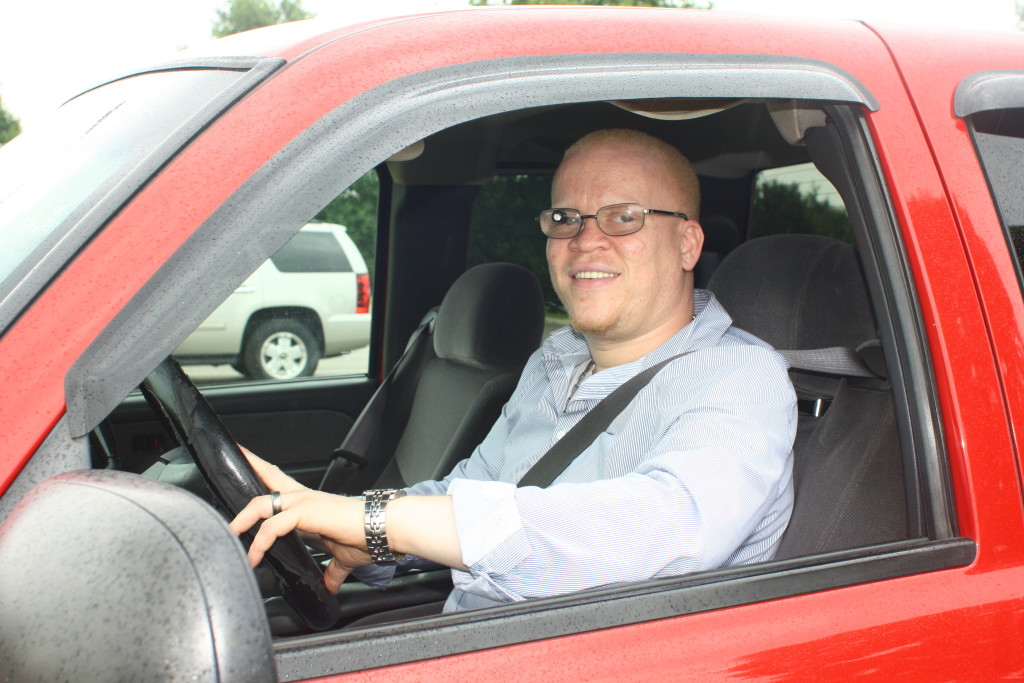Are you unable to get your driver’s license because of a vision problem? There may be a device that can help…
Driving provides us with independence, convenience, and freedom. Having a car is essential for getting around in rural areas with limited public transportation. For some, being able to drive determines whether a person can work and support their family. While not every person with vision loss is able to drive, you may still qualify to drive with a bioptic telescope and with restrictions if you have good side vision and mild-to-moderate central visual impairment.
Bioptic eyewear resembles a small telescope mounted on the upper portion of a pair of prescription glasses. A driver spends most of the time viewing through the bottom prescription lens which is optimized for distance clarity. The bioptic telescope provides the magnification needed to spot details, such as street signs. Every few seconds, the driver initiates a brief downward head tilt to view through the bioptic similar to the time spent checking your rear and side mirrors.
If you’re interested in driving, you should first seek a low vision specialist for a functional low vision evaluation. “When most patient have been told that nothing more can be done to improve their eyesight, it usually means that medical and surgical options have been exhausted. But a low vision examination can open the door for other opportunities,” says Dr. Ho. A thorough low vision exam focuses on how an eye disease affects your daily life activities and can offer devices and strategies on how to cope with your remaining vision. Bioptic telescopes are one of many low vision tools available.
If you meet the State’s vision requirements and your low vision specialist deems you eligible to drive, you can be fitted with a customized bioptic and be taught to efficiently coordinate your eyes and head movements to view stationary and moving objects with your telescope. A rigorous training program is necessary to ensure that you have both the vision skills and confidence needed to be a safe bioptic driver. When the training is completed, your low vision specialist will send a letter to the State. Once approved, you can complete the driver’s permit exam and undergo an independent driving evaluation with a certified instructor. The instructor will release a certificate when you are ready to take the driver’s test with the DMV. The entire process can be completed in as early as 3 months from the initial dispense of the bioptic telescope.
Your license will carry certain restrictions including: daylight driving only in familiar areas with a maximum of 50mph speed and no interstate driving. The annual renewal of your license also requires an updated report from your low vision specialist to ensure the stability of your visual condition. Although the initial paperwork appears daunting, bioptic drivers understand the necessity of having a system of checks to grant them their driving privileges.
A diagnosis of age-related macular degeneration, ocular albinism, or any other low vision impairment can be overwhelming. “Although vision cannot be returned to the level prior to the disease,” Dr. Ho emphasizes that, “many patients with visual problems can still enjoy a better quality of life and independence if they seek out the appropriate resources and support. In some cases, getting a driver’s license may still be possible.”
This article was originally published in the quarterly newsletter in March 2016 for the Visually Impaired Support Group of Cumberland County (http://www.visiongroup1.org/). Please check with your state’s specific requirements per the Department of Motor Vehicle if you reside outside of Tennessee.

